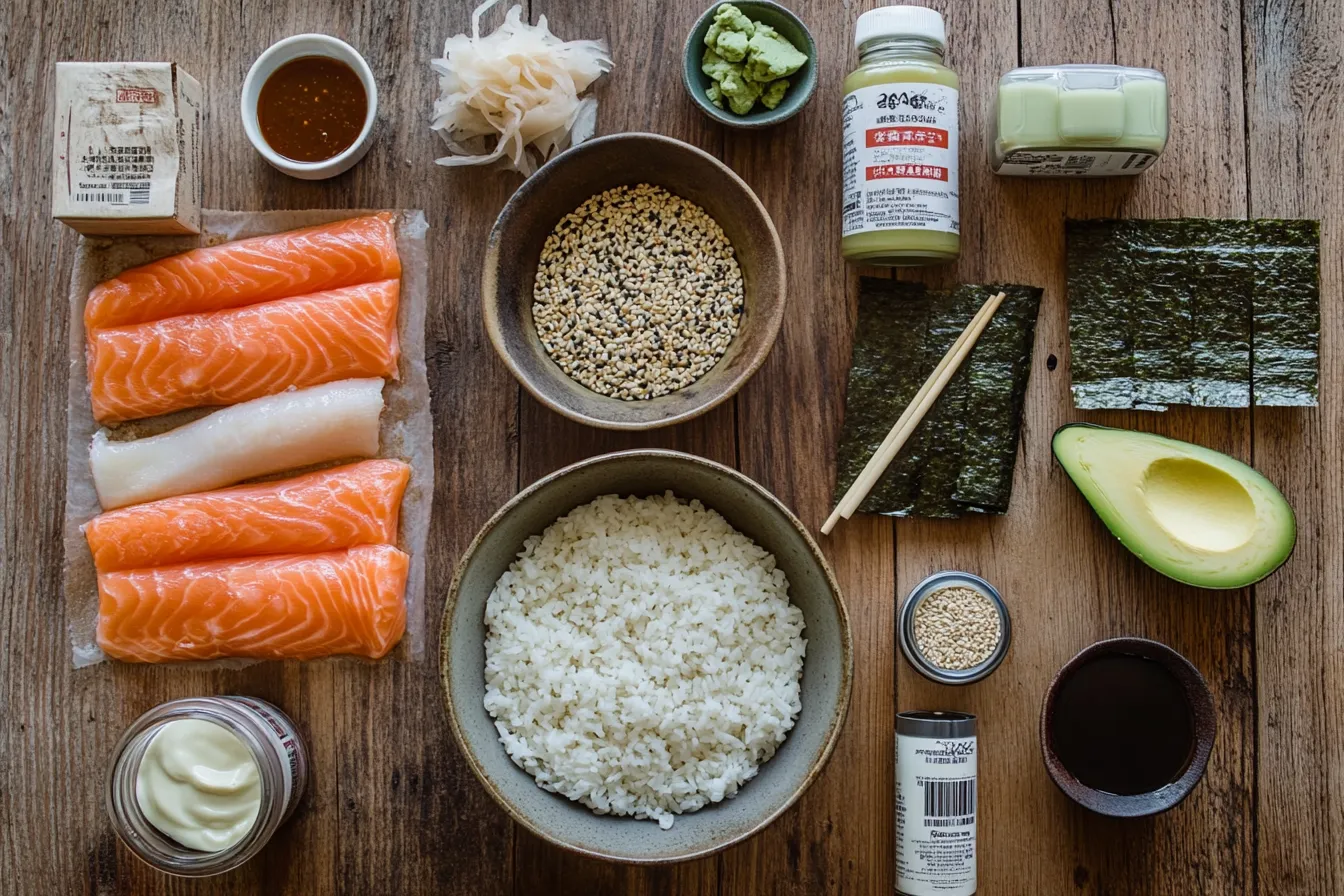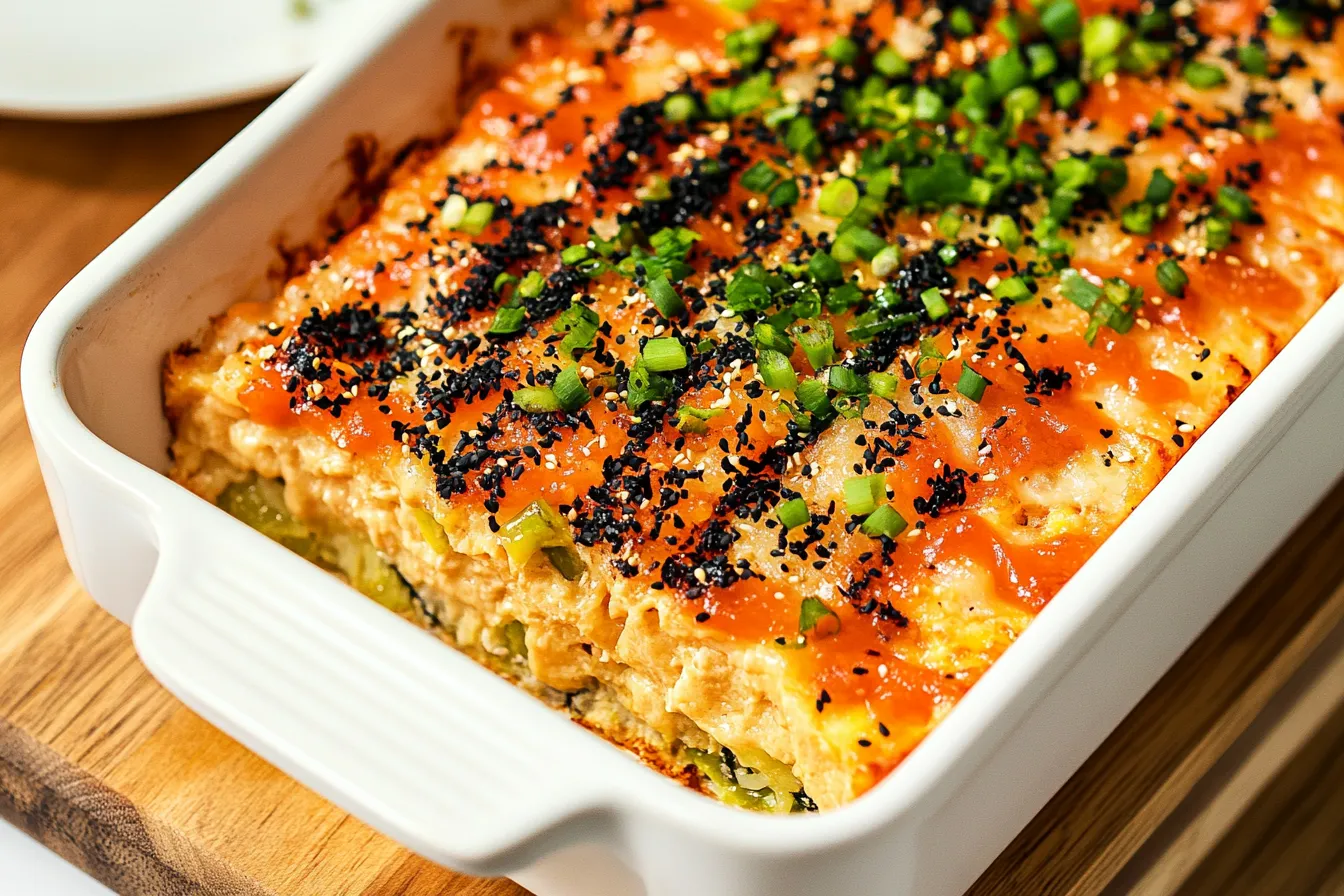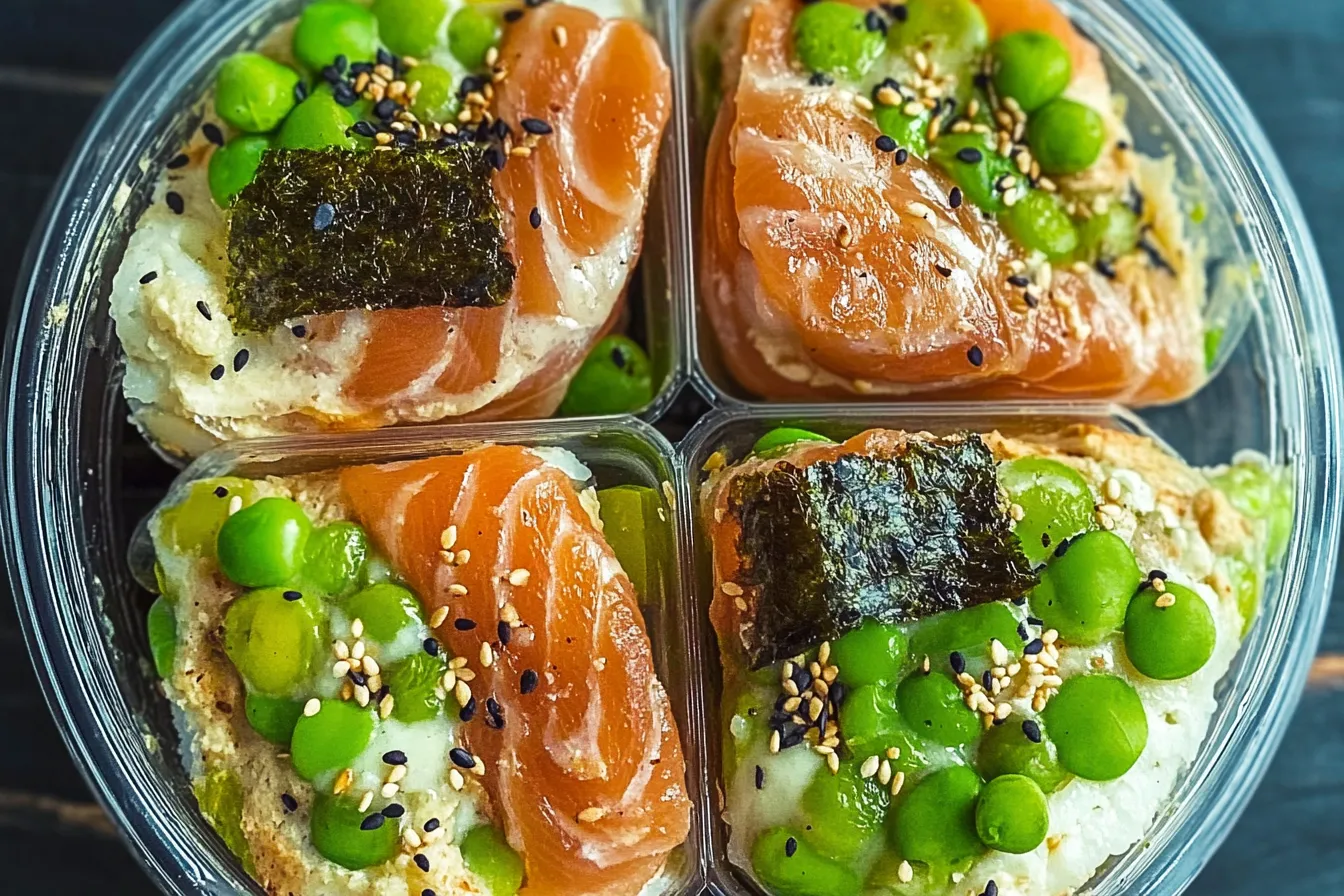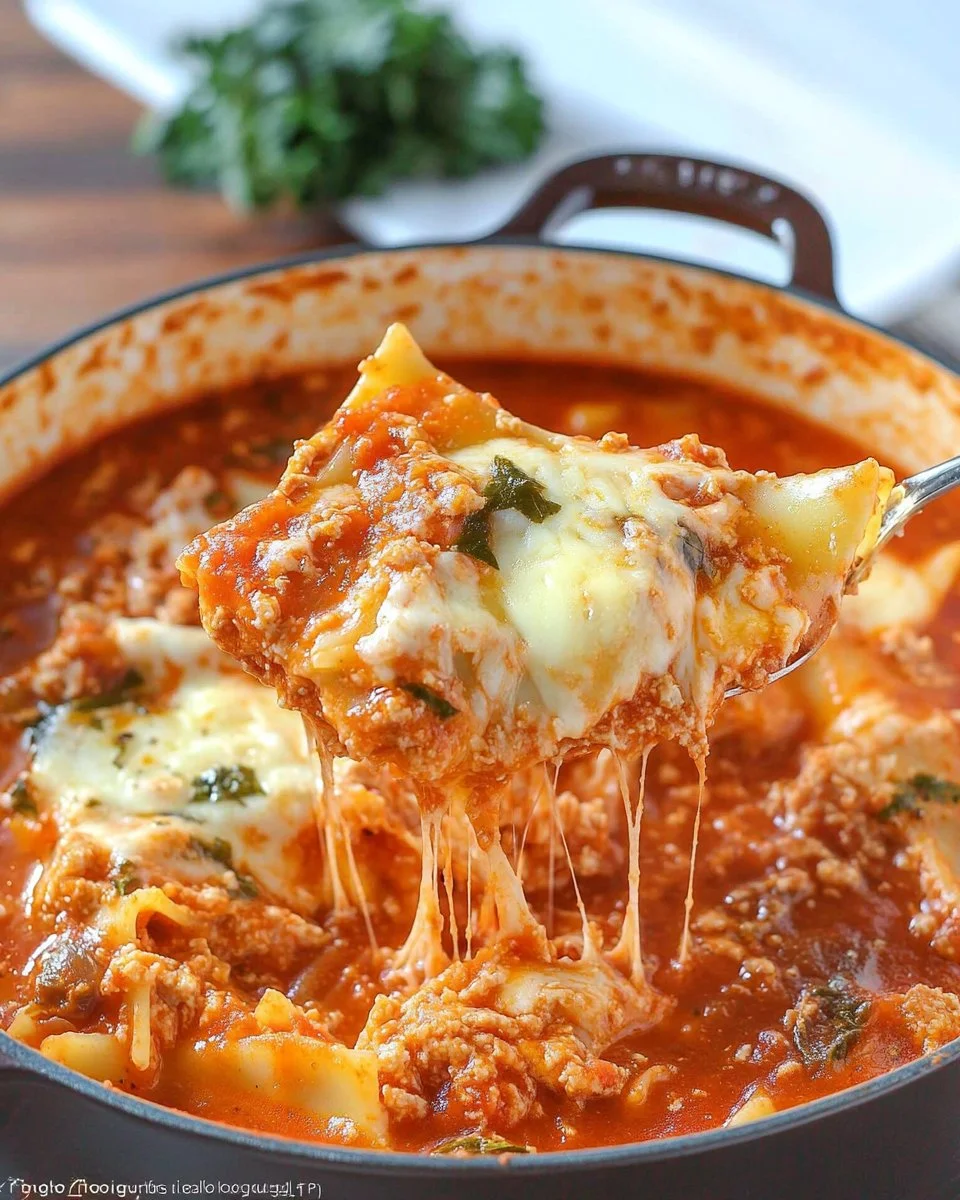What is Sushi Bake? Unveiling the Delicious Trend
Okay, picture this: you love sushi, but you’re either a) intimidated by making rolls, b) feeding a crowd, or c) craving something a little… different. Enter the sushi bake! This dish has taken the internet (and dinner tables) by storm, and for good reason. It’s all the flavors of your favorite sushi, deconstructed and baked into a warm, comforting, and totally customizable casserole.
Defining Sushi Bake: Beyond the Casserole Description
So, what exactly is a sushi bake? Think of it as a layered “sushi casserole.” You’ve got your base of seasoned sushi rice, topped with a delicious mixture of your favorite sushi fillings (like salmon, crab, or veggies), and then often finished with a drizzle of yummy sauces and a sprinkle of flavorful toppings. It’s baked until warm and bubbly, creating a fusion of textures and tastes that’s utterly addictive. It’s not technically sushi in the traditional sense, but it captures the essence of sushi in a whole new way.
The Origins of Sushi Bake: Tracing Its Culinary Roots
While the exact origins are a bit murky, the sushi bake phenomenon is widely believed to have strong roots in Filipino cuisine. Filipino home cooks, known for their resourcefulness and love of adapting dishes, likely played a key role in popularizing this creative take on sushi. The dish’s inherent adaptability and shareable nature fit perfectly with Filipino food culture, which emphasizes communal dining and flavorful, satisfying meals. From there, it exploded onto social media, with home cooks worldwide sharing their own unique versions.
Sushi Bake vs. Traditional Sushi: Key Differences and Similarities
Let’s be clear: sushi bake isn’t trying to replace traditional sushi. They’re two different culinary experiences. Traditional sushi focuses on the precise art of hand-rolling and the delicate balance of raw fish and perfectly seasoned rice. Sushi bake, on the other hand, is all about convenience, customization, and a warm, comforting vibe.
Here’s a quick comparison:
- Traditional Sushi: Individual pieces, often raw, with emphasis on presentation.
- Sushi Bake: Casserole-style, usually cooked (though you can use cooked ingredients in traditional sushi too), emphasis on flavor combinations and ease of preparation.
Similarities? Both use sushi rice, similar fillings (fish, veggies, etc.), and often incorporate Japanese flavors like soy sauce, wasabi, and furikake.
Why is Sushi Bake So Popular?
The rise of the sushi bake isn’t just a fluke. It’s popular for several very good reasons:
- Convenience: No rolling required! Just layer and bake. It’s significantly easier than making individual sushi rolls, especially for beginners.
- Customization: You’re the boss! Use whatever fillings, toppings, and sauces you love. Dietary restrictions? No problem! The possibilities are endless.
- Flavor: The combination of warm, seasoned rice, savory fillings, and flavorful sauces is simply irresistible. It’s a flavor explosion in every bite.
- Shareability: It’s perfect for potlucks, parties, or family dinners. One dish feeds a crowd!
Why Sushi Bake is the ULTIMATE Party Dish
Planning a get-together? Forget slaving over complicated appetizers. A sushi bake is your secret weapon for a stress-free and impressive party dish.
Crowd-Pleasing Flavors: A Guaranteed Hit with Guests
Let’s face it, sushi is generally a crowd-pleaser. But a sushi bake takes it to the next level. The warm, comforting nature of the dish, combined with the familiar sushi flavors, makes it a guaranteed hit with almost everyone. Even those who might be hesitant about raw fish can usually find a sushi bake variation they’ll enjoy (using cooked seafood or vegetarian options).
The Convenience Factor: Easy to Make Ahead and Serve
Party planning can be hectic. The beauty of a sushi bake is that you can do most of the prep work ahead of time. Assemble the layers, cover it, and pop it in the fridge. When your guests arrive, just bake it until warm and bubbly. Serving is a breeze too – just scoop and enjoy!
Customizable to Any Diet: Options for Everyone
Got guests with dietary restrictions? No sweat! A sushi bake is incredibly adaptable.
- Vegetarian: Load it up with avocado, cucumber, carrots, and other veggies. Tofu is a great protein option too.
- Gluten-Free: Sushi rice is naturally gluten-free. Just be sure to use gluten-free soy sauce (tamari) and check the ingredients of any sauces you use.
- Pescatarian: Salmon, tuna, crab, shrimp – the seafood options are plentiful!
You can easily create different sections within the same bake to cater to different preferences.
Presentation Perfection: Making a Stunning Centerpiece
A sushi bake, when garnished nicely, can be a real showstopper. The vibrant colors of the toppings, the contrasting textures, and the overall presentation make it a visually appealing centerpiece for your party table.
Affordability: A Budget-Friendly Party Option Compared to Traditional Sushi
Let’s be honest, ordering a large platter of traditional sushi can be expensive. A sushi bake, on the other hand, is a much more budget-friendly option, especially when feeding a crowd. You can use less expensive ingredients (like imitation crab) without sacrificing flavor.

Essential Ingredients for the Perfect Sushi Bake
Ready to dive in? Here’s what you’ll need to create your own sushi bake masterpiece:
Choosing the Right Rice: Short-Grain Sushi Rice Explained
The foundation of any good sushi bake is the rice. You must use short-grain Japanese rice, often labeled as “sushi rice.” This type of rice has a higher starch content than long-grain rice, which gives it the sticky texture needed to hold the bake together. Don’t try to substitute with other types of rice – it won’t work!
The Best Protein Options: Salmon, Tuna, Crab, Shrimp, and More
The protein is where you can really get creative. Here are some popular choices:
- Salmon: A classic sushi favorite, salmon adds richness and flavor. You can use cooked or smoked salmon.
- Tuna: Another classic, tuna offers a meaty texture and a slightly stronger flavor. Canned tuna (in water or oil, drained) works surprisingly well!
- Crab: Imitation crab (surimi) is a budget-friendly and delicious option. Real crab meat is a luxurious upgrade.
- Shrimp: Cooked shrimp adds a nice sweetness and bite.
- Tofu: For a vegetarian option, seasoned and baked tofu is a great choice.
Must-Have Toppings: Furikake, Spicy Mayo, Unagi Sauce, Avocado
These toppings are essential for adding that signature sushi flavor and texture:
- Furikake: This Japanese seasoning blend typically includes dried seaweed, sesame seeds, dried fish flakes, and salt. It adds a savory, umami flavor and a nice crunch.
- Spicy Mayo: A simple mixture of mayonnaise and sriracha (or other chili sauce), spicy mayo adds a creamy, spicy kick.
- Unagi Sauce: This sweet and savory sauce, traditionally used on grilled eel, adds a delicious glaze.
- Avocado: Slices of creamy avocado add a cool, refreshing element.
Essential Japanese Pantry Staples for Sushi Bake.
- Rice Vinegar: Used to season the sushi rice, giving it that characteristic tangy flavor.
- Soy Sauce: A must-have for dipping and adding umami. Use tamari for a gluten-free option.
- Wasabi: For those who like a little heat!
- Nori Sheets: Dried seaweed sheets, used for wrapping the sushi bake (more on this later).
Ingredient Substitutions: Making it Your Own
Don’t be afraid to experiment! If you don’t have a specific ingredient, here are some possible substitutions:
- Rice Vinegar: You can use a mixture of white vinegar and sugar, but the flavor won’t be quite the same.
- Furikake: If you can’t find furikake, you can try making your own blend with sesame seeds, dried seaweed flakes, and a pinch of salt.
- Unagi Sauce: Teriyaki sauce can be used as a substitute, although it will be slightly less sweet.
Step-by-Step Guide to Making a Basic Sushi Bake
Let’s get baking! Here’s a simple recipe to get you started:
Preparing the Perfect Sushi Rice: Cooking and Seasoning
- Rinse the Rice: Rinse the sushi rice under cold water until the water runs clear. This removes excess starch and helps prevent stickiness.
- Cook the Rice: Use a rice cooker or follow the package instructions for stovetop cooking.
- Season the Rice: While the rice is still hot, gently mix in a mixture of rice vinegar, sugar, and salt. The exact proportions will vary depending on your preference, but a good starting point is 1/4 cup rice vinegar, 2 tablespoons sugar, and 1 teaspoon salt for every 3 cups of cooked rice. Let the rice cool completely.
Creating the Flavorful Filling: Mixing Your Chosen Ingredients
- Prepare your Protein: Cook your chosen protein (salmon, shrimp, etc.) or drain canned tuna or crab.
- Mix the Filling: In a bowl, combine your protein with any other desired ingredients, such as chopped vegetables, spicy mayo, or cream cheese.
Layering Your Sushi Bake: Assembly Instructions
- Spread the Rice: Lightly grease a baking dish (9×13 inch is a good size). Spread the seasoned sushi rice evenly over the bottom of the dish.
- Add the Filling: Spread the filling mixture evenly over the rice.
- Top it off: Sprinkle with furikake and drizzle with any desired sauces (spicy mayo, unagi sauce).
Baking Your Sushi Bake: Achieving the Ideal Texture
- Bake: Bake in a preheated oven at 350°F (175°C) for 20-25 minutes, or until heated through and the top is slightly golden brown.
Garnishing and Serving: Presentation Tips
- Garnish: Once baked, garnish with sliced avocado, chopped green onions, sesame seeds, or any other desired toppings.
- Serve: Serve warm with nori sheets for wrapping.
Delicious Sushi Bake Variations to Impress Your Guests
Once you’ve mastered the basic recipe, it’s time to get creative! Here are some fun variations:
Spicy Salmon Sushi Bake: A Fiery Twist
Use cooked salmon flaked into pieces, and mix it with a generous amount of spicy mayo and a sprinkle of chili flakes.
California Roll Sushi Bake: A Classic Reinvented
Combine imitation crab meat with avocado, cucumber, and a drizzle of Japanese mayonnaise.
Vegetarian Sushi Bake: Plant-Based Deliciousness
Use seasoned and baked tofu, along with a variety of vegetables like avocado, cucumber, carrots, and edamame.
Tuna Mayo Sushi Bake.
A very popular Variation and easy to make. Simply mix Canned tuna and Japanese Mayonnaise.
Seafood Medley Sushi Bake
Combine different types of seafood, such as salmon, tuna, shrimp, and crab, for a truly decadent bake.
Kid-Friendly Sushi Bake Recipes
Use cooked chicken or shrimp, along with mild flavors like cream cheese and avocado. Avoid spicy ingredients.

Sushi Bake Sauces and Toppings: Elevating the Flavor
The right sauces and toppings can take your sushi bake from good to amazing!
Homemade Spicy Mayo: Recipe and Variations
- Basic Spicy Mayo: Mix 1/2 cup mayonnaise with 2-3 tablespoons sriracha (or to taste).
- Garlic Spicy Mayo: Add 1 minced garlic clove to the basic recipe.
- Lime Spicy Mayo: Add 1 tablespoon lime juice to the basic recipe.
Creamy Sesame Sauce
Mix together mayonnaise, sesame oil, rice vinegar, soy sauce, and a touch of sugar.
Unagi Sauce (Eel Sauce) Alternatives
If you can’t find unagi sauce, teriyaki sauce is a decent substitute, or you can make your own by simmering soy sauce, mirin, sake, and sugar.
The Role of Furikake: Flavor and Texture
Furikake is more than just a garnish. It adds a crucial layer of umami flavor and a satisfying crunch.
Other Creative Topping Ideas: Masago, Tobiko, Nori Strips
- Masago/Tobiko: These tiny fish roe add a pop of color and a salty, briny flavor.
- Nori Strips: Thinly sliced nori sheets add a subtle seaweed flavor and visual appeal.
Serving Sushi Bake: Tips for a Flawless Presentation
Presentation matters! Here’s how to make your sushi bake look as good as it tastes:
Choosing the Right Serving Dish: Casserole Dishes, Platters
A standard 9×13 inch casserole dish works perfectly. For a more elegant presentation, you can use a smaller, prettier baking dish or even transfer the baked sushi bake to a platter.
Garnishing Techniques: Creating Visual Appeal
- Avocado Slices: Arrange thin slices of avocado in a fan shape.
- Green Onions: Sprinkle chopped green onions for a pop of color and freshness.
- Sesame Seeds: Sprinkle white or black sesame seeds for a contrasting texture.
- Sauce Drizzle: Use a squeeze bottle to create an artistic drizzle of spicy mayo or unagi sauce.
Serving with Nori Sheets: How to Wrap and Eat
The traditional way to eat sushi bake is to scoop a portion onto a sheet of nori and wrap it up like a mini burrito. It’s a fun and interactive way to enjoy the dish.
Pairing with Sides: Complementary Dishes and Drinks
Serve your sushi bake with:
- Edamame: Steamed and salted edamame pods are a classic Japanese appetizer.
- Miso Soup: A warm and comforting soup that complements the richness of the sushi bake.
- Seaweed Salad: A refreshing and flavorful salad.
- Japanese Beer or Sake: These beverages pair perfectly with the flavors of sushi.
- Green Tea.
Portioning for a Crowd: Calculating Servings
A 9×13-inch sushi bake typically serves 8-10 people, depending on appetites and whether you’re serving other dishes.
Making Sushi Bake Ahead of Time: Storage and Reheating
One of the best things about sushi bake is that it’s make-ahead friendly!
Proper Storage Techniques: Keeping it Fresh
Once the sushi bake has cooled completely, cover it tightly with plastic wrap or transfer it to an airtight container. Store it in the refrigerator.
Reheating Methods: Oven vs. Microwave
- Oven: Reheat in a preheated oven at 350°F (175°C) for 15-20 minutes, or until heated through.
- Microwave: Reheat individual portions in the microwave on medium power for 1-2 minutes, or until heated through. The microwave may make the rice a bit softer.
How Long Does Sushi Bake Last? Shelf Life and Food Safety
Properly stored, sushi bake will last for 3-4 days in the refrigerator. Use your best judgment – if it looks or smells off, discard it.
Freezing Sushi Bake
While it is possible to freeze, it is generally not recommended. It’s best practice to make it fresh.

Troubleshooting Common Sushi Bake Problems
Even the best cooks run into occasional problems. Here’s how to troubleshoot some common sushi bake issues:
Rice Too Sticky or Mushy: Solutions and Prevention
- Cause: Overcooked rice or not rinsing the rice properly.
- Solution: Unfortunately, there’s not much you can do to fix rice that’s already too sticky. Prevention is key: rinse the rice thoroughly and follow the cooking instructions carefully.
Filling Too Dry or Watery: Adjusting Consistency
- Too Dry: Add a little more mayonnaise, cream cheese, or sauce.
- Too Watery: If you’re using canned tuna or crab, make sure to drain it very well. You can also add a little more rice to absorb excess moisture.
Sushi Bake Falling Apart: Tips for Stability
- Cause: Rice not sticky enough, filling too wet, or not enough rice.
- Solution: Make sure to use the correct type of rice (short-grain sushi rice) and cook it properly. Drain the filling well and use enough rice to create a solid base.
Burnt or Unevenly Cooked Sushi Bake: Baking Tips
- Cause: Oven temperature is too high or baking for too long.
- Solution: Check your oven temperature with an oven thermometer to ensure accuracy. Bake for the recommended time, and check for doneness with a fork. If the top is browning too quickly, cover it loosely with foil.
Sushi Bake and Dietary Considerations
Sushi bake can be adapted to fit a variety of dietary needs:
Gluten-Free Sushi Bake Options
Use tamari instead of soy sauce, and double-check the ingredients of all sauces and toppings to ensure they are gluten-free.
Vegetarian and Vegan Sushi Bake Adaptations
Use tofu or other plant-based protein sources, and load up on vegetables. Use vegan mayonnaise and ensure all other ingredients are vegan-friendly.
Making Sushi Bake Healthier: Ingredient Swaps
- Use less mayonnaise and cream cheese.
- Add more vegetables.
- Use brown rice instead of white rice (although the texture will be different).
- Use leaner protein sources like tuna or shrimp.
Allergy Considerations
Be mindful of common allergens like fish, shellfish, soy, and sesame. Always inform your guests of the ingredients used, especially if they have allergies.
Frequently Asked Questions
Let’s answer some common questions:
Can I use brown rice for sushi bake?
Technically, yes, but it won’t have the same sticky texture as short-grain sushi rice. The sushi bake may not hold together as well.
What’s the best type of salmon to use?
Cooked or smoked salmon works best. You can use fresh salmon, but make sure it’s cooked thoroughly before adding it to the bake.
Can I make sushi bake without an oven?
While the traditional method involves baking, you could potentially assemble the layers in a heat-proof dish and warm it through on a stovetop or in a slow cooker, but the texture will be different.
How do I make sushi bake spicy?
Add spicy mayo, sriracha, chili flakes, or chopped jalapeños to the filling or as a topping.
Is sushi bake healthy?
It depends on the ingredients you use. It can be a relatively healthy meal if you use lean protein, plenty of vegetables, and go easy on the sauces.
How to Store Sushi bake?
Store leftover sushi bake in an airtight container in the refrigerator for up to 3-4 days.
Beyond the Bake: Exploring Other Sushi-Inspired Dishes
If you love the flavors of sushi, here are some other dishes to try:
Deconstructed Sushi Bowls
Similar to sushi bake, but served in individual bowls instead of being baked.
Sushi Burritos (Sushirritos)
All your favorite sushi ingredients are wrapped in a large nori sheet like a burrito.
Onigiri (Japanese Rice Balls)
Seasoned rice balls, often filled with savory ingredients and wrapped in nori.
Conclusion
The sushi bake is more than just a trend – it’s a delicious, versatile, and fun way to enjoy the flavors of sushi in a whole new way. Whether you’re a seasoned cook or a kitchen newbie, this dish is easy to make and sure to impress. So gather your ingredients, get creative, and prepare to enjoy a sushi bake sensation!





